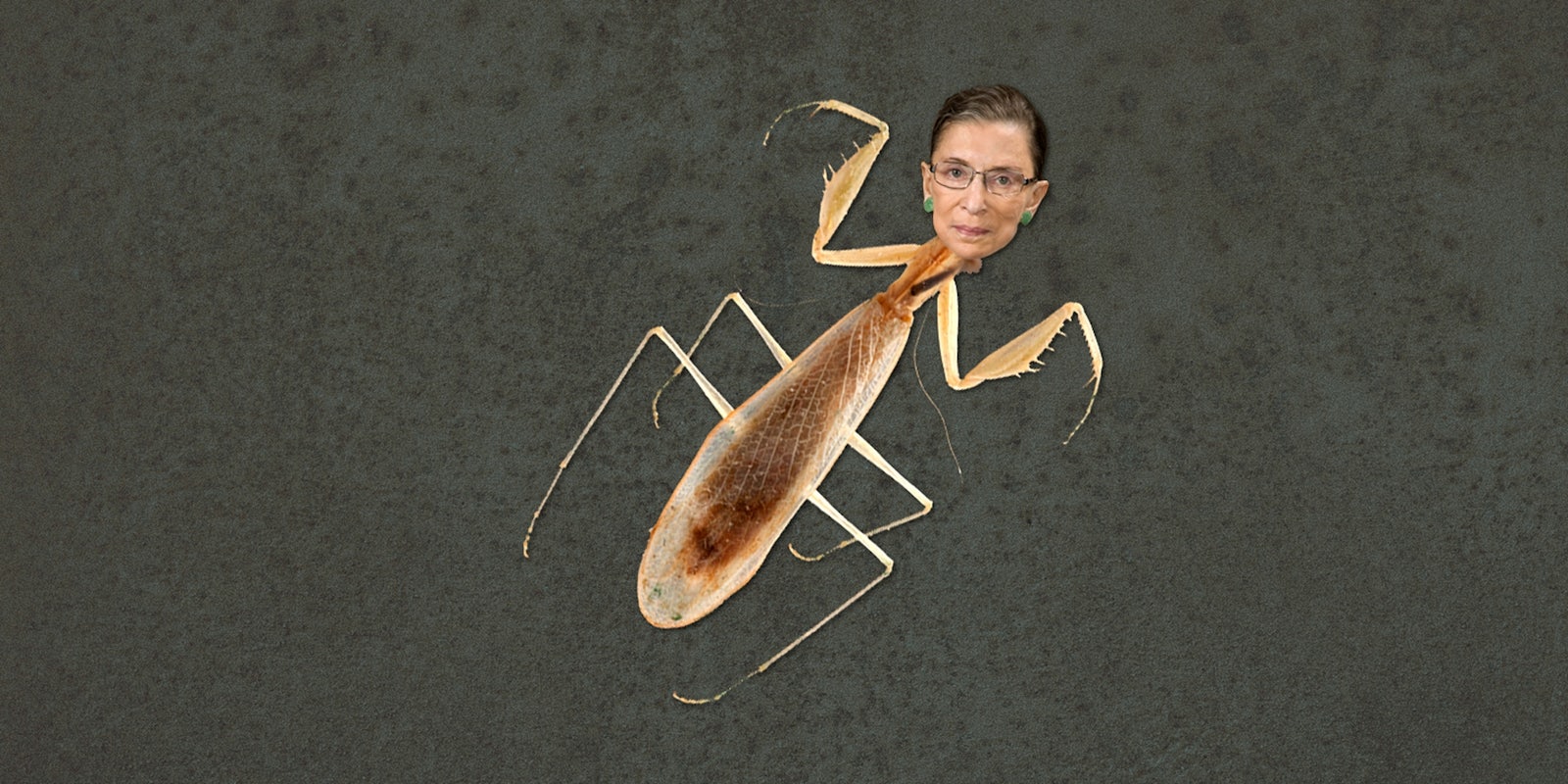Researchers at the Cleveland Museum of Natural History and Case Western Reserve University have defined a new species of praying mantis using a new system of classification.
Entomologists usually classify different species of praying manti and other insects by examining the male genitalia in the species, according to a press release. This time, however, the researchers looked at the female genitalia to establish whether or not that could be used to identify the species. In this case it worked, so the study’s lead author, Ph.D. candidate Sydney Brannoch, chose to name the species Ilomantis ginsburgae, after U.S. Supreme Court Justice Ruth Bader Ginsburg, “for her relentless fight for gender equality,” according to the press release.
The mantis hails from Madagascar and, like other leaf mantises, it resembles a leaf. It has conical eyes, a green, flattened body, and veins on its wings that look like the veins of a leaf. The researchers published their findings in the journal Insect Systematics and Evolution.
These findings are important not only because they establish a new species of mantis, but also because they set a precedent that researchers don’t need to rely on male specimens to identify new species. But Brannoch sees another triumph in her research.
“As a feminist biologist, I often questioned why female specimens weren’t used to diagnose most species. This research establishes the validity of using female specimens in the classification of praying mantises,” Brannoch said in the press release. “It is my hope that our work not only sets a precedent in taxonomy but also underscores the need for scientists to investigate and equally consider both sexes in other scientific investigations.”
In a video interview about her research, Brannoch explains that in the early 20th century, entomologists used both male and female genitalia to help describe and differentiate species from one another. But as studies progressed, she said, researchers developed the system for describing the male genitalia further than for the female, perhaps because the male genitalia are easier to dissect out.
But that leaves female specimens in a taxonomic limbo. Without an established way to characterize and define female specimens, many entomologists are left unsure of whether the female specimens they collect in the field belong to one species or another, Brannoch said. That can leave other types of scientists, such as ecologists, with an incomplete data set to determine important measures of environmental health like diversity and population levels of different types of insects.
With this new system, Brannoch is blazing a trail for other scientists to look at males and females to better inform their research.
H/T Politico


